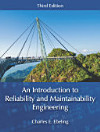Design Review Based on Failure Mode: How Toyota Engineers Use an Advanced Model of FMEA to Improve Product Reliability (Toyota’s GD3)
About this ebook
Reliability is about having a product or service that can be trusted is really important for making customers happy. This means that the product will work the way the customer wants it to, and it will keep working well for a long time. Quality experts are basically saying that it is very important to focus on improving quality in all aspects of a business. They believe that businesses should prioritize quality in order to be successful. The more complicated the product is, the harder this task gets.
Before World War II, the military, aerospace, and aircraft industries used the failure mode and effect analysis (FMEA) approach. Toyota then invented its production system after the war. FMEA has been around since the middle of the 20th century, especially in the aerospace and military industries. FMEA was made in the 1940s and used by the U.S The military works to find and fix problems in production before they happen. The method worked well, so NASA used it for different projects like Apollo and Voyager in the 1960s.
Nowadays Six Sigma's project team use FMEA in the Analyze stage of DMAIC because extraordinary quality is not only designed into the product, it is designed into the development process itself.
The DRBFM methodology was created by Tatsuhiko Yoshimura, who is an expert in quality and a professor at Kyushu University in Japan. Yoshimura understood that making changes without the right documents can cause design problems. He used the idea of preventing problems before they happen to come up with his own way of thinking called DRBFM.
About the author
Mohammed Hamed Ahmed Soliman is an industrial engineer, consultant, university lecturer, operational excellence leader, and author. He works as a lecturer at the American University in Cairo and as a consultant for several international industrial organizations.
Soliman earned a bachelor of science in Engineering and a master’s degree in Quality Management. He earned post-graduate degrees in Industrial Engineering and Engineering Management. He holds numerous certificates in management, industry, quality, and cost engineering.
For most of his career, Soliman worked as a regular employee for various industrial sectors. This included crystal-glass making, fertilizers, and chemicals. He did this while educating people about the culture of continuous improvement.
Soliman has lectured at Princess Noura University and trained the maintenance team in Vale Oman Pelletizing Company. He has been lecturing at The American University in Cairo for 8 years and has designed and delivered 40 leadership and technical skills enhancement training modules.
Soliman is a member at the Institute of Industrial and Systems Engineers and a member with the Society for Engineering and Management Systems. He has published several articles in peer reviewed academic journals and magazines. His writings on lean manufacturing, leadership, productivity, and business appear in Industrial Engineers, Lean Thinking, Industrial Management, and Sage Publications. Soliman’s blog is www.personal-lean.org.








